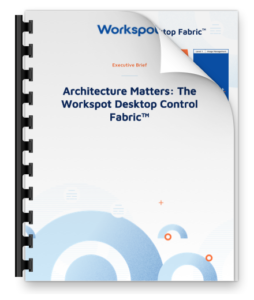Conversations with Customers: Out with VDI, In With Desktop Cloud for Legal
In my many years in the VDI business, I have engaged with law firms large and small, all over the world, to help them derive value from virtual desktops. It’s surprising how many law firms were early adopters of VDI, because these firms tend to have small IT staffs, so the herculean effort involved in implementing and managing on-prem VDI is certainly at odds with having limited IT resources. The fact that legal IT teams have been willing to endure so much complexity and expense to keep their virtual desktops up and running really underscores the productivity benefits of attorneys and staff being able to work from the office, from home, at a client site, or wherever their case takes them. Those benefits are undeniable, but they come at a very high price for most law firms, and that pain has to be alleviated at some point. The good news is there are much better solutions available today than there were even 5 years ago!
What’s a Law Firm to Do?
This week I want to share a conversation I had with the CIO of a global law firm who has been down both the on-prem VDI and cloud virtual desktop roads. Currently the firm is running on-premises VDI for U.S. users and cloud desktops for other users. The problem is that neither approach is working for them. Let’s explore why.
The Need to Accommodate Growth
This global law firm is operating in several countries and is expanding, and their CIO has already decided that a cloud-first approach to their IT infrastructure is the only way to accommodate this growth. By definition, the need to support global expansion cannot be achieved with legacy VDI, whether it’s on-prem or in the cloud. Why? Because to scale your virtual desktop implementation you need a cloud-native, globally distributed architecture; this allows IT teams to spin-up (in minutes!) Windows 10 desktops across cloud regions around the globe and then manage them all from a single pane of glass. Achieving this kind of scalability with on-prem VDI is simply not possible. With the cloud desktop solution this firm is currently using we don’t even get to a conversation about scalability because the reliability issues the firm is experiencing are so severe, they are ready to call it quits now. To top it off, the legal software they’ve adopted is not supported on the Windows Server 2016 virtual desktops offered by this cloud vendor. I admit I was super happy to let him know that Workspot has the only turnkey, cloud-native, globally distributed architecture for cloud desktops, and that solves the firm’s challenges around driving growth. With Workspot Desktop Cloud they can have near-unlimited scalability around the globe, better security, and 99.95% cloud desktop uptime. That’s the formula for business agility, and agility drives growth!
The Need to Support Cloud-Native Legal Apps & Improve DR
The firm is already using Office 365, and that experience has really paved the way to a cloud-first mentality. The firm’s new legal software is cloud-based – it won’t work over a LAN – so there’s another nail in the coffin of on-prem VDI. Heading down the public cloud path presents other opportunities too. What about disaster recovery (DR)? Well, if you could have “standby” cloud desktops that are always up to date with your Windows 10 image, that could be activated during a business disruption by an internal designee with just one click, would that alleviate many of the concerns about your DR plan? After all, DR is mostly about protecting the firm with the ability to continue serving clients even when disaster strikes. With Workspot, you get Windows 10 cloud desktops on Microsoft Azure, so all your Windows 10 apps are fully supported. Plus, it’s not only nice to have some extra piece of mind about your DR recovery time objective (RTO), it’s imperative that you remove the risk from your DR plan by modernizing it, and you can do that with Workspot Disaster Recovery Cloud.
The Need to Eliminate Data Center CapEx
As I’ve said many times, most IT leaders I speak with these days “want out of the data center business.” If only I had a dollar for every time I’ve heard that exact phrase! This conversation was not different. Shedding data center CapEx and shifting to an OpEx model for IT is where this CIO is heading also, like so many of his peers. His directive is to stop buying and depreciating hardware, and it makes perfect sense. This is where we go right back to the conversation about supporting the firm’s growth; data center infrastructure limits growth! Why would you spend time and money owning one data center when you could access 50 or more globally? And someone else gets to manage it! While providing way better security and compliance than your in-house team ever could (sorry, that hurts a bit). So yes, it’s time to get out of the data center business, especially if you’re interested in accelerating company growth!
The Workspot Difference
One of my favorite customer quotes is from a large, global law firm, whose IT Director said, “We work with Workspot because they care about us.” That’s reflective of the fact that we are really nice people and we do care, and that is manifested in our absolute commitment to your success with our PC in the Cloud solutions on Azure. Our technology is the most innovative out there, our collective expertise with virtual desktops is the most impressive you will find, our business model is customer-centric, and our Customer Success team is obsessively focused on your success. That’s why Workspot Desktop Cloud is “in” and it’s time to make the move!



